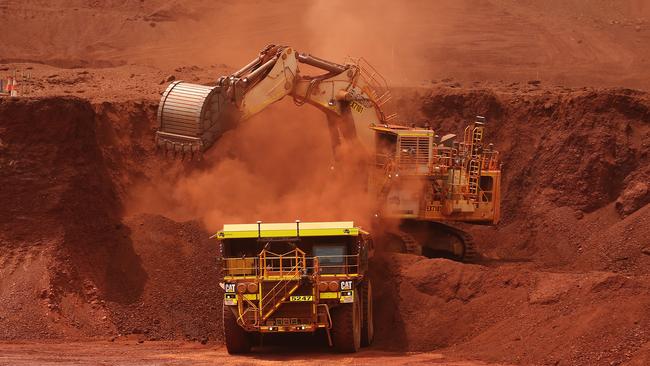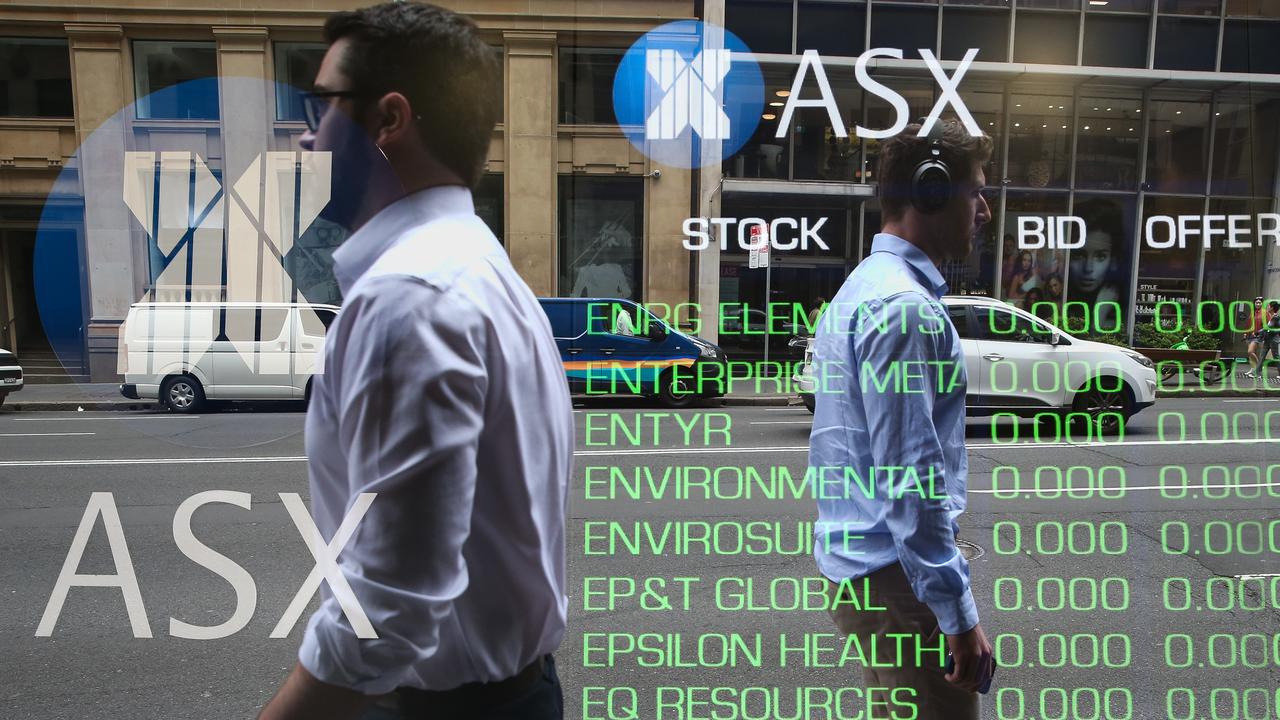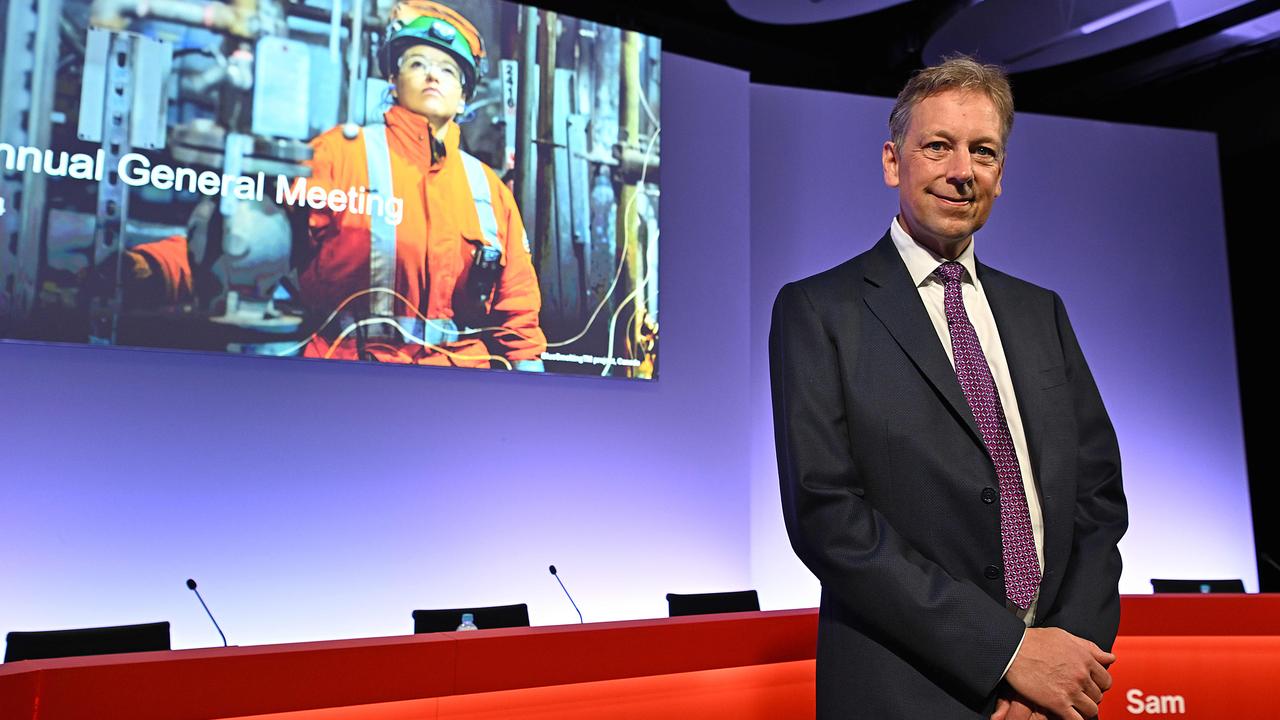Iron ore, coal and copper boom made Aussies poorer, not richer
You wouldn’t know it but Australia has just passed through a peak of its greatest ever mining boom. There’s a reason none of us feel richer.

Mining
Don't miss out on the headlines from Mining. Followed categories will be added to My News.
ANALYSIS
You may or may not know that Australia has just passed through the peak of its greatest ever mining boom. The reason why you may not know this is that the outstanding difference between this boom and those previous is that it very likely made you poorer. So no politician has told you about it.
The boom
The resources boom this time around included record high prices in all of Australia’s usual strengths. Iron ore, coal, and base metals like copper all hit all-time high prices.
This helped lift Australia’s terms of trade (the ratio of export price to import prices and a great guide to the relative strength of the nation’s pay packet) to amazing highs.
However, the price boom came with another feature that Australia has never before enjoyed: huge rises in gas export prices. That is where the trouble begins.
How mining booms are shared
There are three channels that spread Australian mining booms throughout the economy and into different segments.
The first but smallest is the stock market. Increased capital values and dividends spread some of the wealth and income gains. On this occasion, however, Australia has experienced falling share prices because the Ukraine War that triggered the price boom also delivered equity market risks.
As well, so much of Australian mining is now foreign-owned that the boom has actually delivered the national economy a primary income deficit as enormous dividends flow offshore.
The second channel is via the national budget which collects extra revenue from mining profits.
The “rivers of gold” as they are often called are flowing again this time but not as strong as they should. The reason is that all major commodities are radically undertaxed.
This is certainly the case in iron ore and coal but they do, at least, deliver the bulk of the returns.

The problem of undertaxation is especially acute in the liquefied natural gas (LNG) export segment which is the novel feature of this boom. That sector pays next to nothing to the ATO because it enjoys a mangled tax regime that rewards it for massive capital misallocation delivering huge writedowns.
The third and largest conduit for sharing the gains of mining booms is via rising wages. As high resource prices trigger investment in new projects, a tightening labour market lifts wages. This was the case across the entire China mining boom from 2000-2011.
However, it is patently not the case today. On the contrary, wages have remained very soft as little investment has flowed and real wages have collapsed as inflation has gone berserk.
How mining booms are trashed
The unusual role of energy prices in today’s mining boom is the key to understanding these malformed impacts on ordinary Australians. The normal channels of mining boom income gains are more muted than they appear.
Mining investment is lagging owing to a combination of geopolitical risks, environmental, social and governance and other forces.
Yet, the most important factor is of Australia’s own doing.
The biggest factor driving the growth of inflation above that of wages is energy costs. The Ukraine war dropped a petrol price bomb on households earlier this year.
But, more important still, is the inflation that we are only now beginning to see will get much worse in the year ahead.
It is the rising gas (and coal) prices and their impacts on electricity prices.
The Australian gas price has risen from an average of around $8 Gigajoule (Gj) before the war to as high as $65Gj after it. It is still sitting at $25Gj today (traditionally it is $3-4Gj).
Owing to the role of gas as a marginal price setter in the National Electricity Market, prices for power have skyrocketed as well, and at current rates bills will double over the next year as consumers renew their contracts.
This is an extra 3.5 per cent added to inflation all by itself. Worse, electricity is an intensive services economy cost, meaning the vast bulk of the Australian business will experience the shock and pass it on, lifting inflation by 6 per cent over two years.

Needless to say, this is a key driver of the rising interest rates that are already collapsing house prices. So, rather than Australia enjoying a wealth windfall from rising stock prices, they are being hit hard by falls in their largest asset class as well.
Can it be fixed?
Policy failure is at the heart of the misfiring mining boom and my belief is that the blame falls largely at the feet of the Australian Labor Party. Mistakes, political barstardry, cowardice and corruption over a decade have come home to roost.
It started in 2010 with the Rudd government’s failed attempt to impose new mining taxes. As internal ALP politics assassinated its own PM, a panicked Gillard government allowed miners to write their own tax code.
Hence the fact that giant gas exports today deliver little tax revenue despite enormous profits.
Moreover, the Gillard government also refused to countenance any forms of domestic reservation for the large gas export projects that were being built in QLD. Unlike WA which now has both cheap gas and power today.
Hence the fact that global gas prices based upon scarcity have now landed on Australia’s east coast even though it has oodles of cheap gas.
The assistant treasurer at the time of these terrible policy failures was Jim Chalmers. Today he is the Treasurer but, according to Labor sources, he is “scarred” from these experiences meaning he has been very slow to move on to the obvious solutions.
Canberra can easily impose a $7Gj price trigger into Malcolm Turnbull’s 2017 domestic gas reservation mechanism to crash local energy prices.
Even better, it could impose an export levy on all east coast gas exports and collect the war-windfall profits for the public as well. This would immediately end interest rate rises and asset price falls, plus restore real income growth over the next year, thus distributing the mining boom gains to their rightful owner: You.
David Llewellyn-Smith is Chief Strategist at the MB Fund and MB Super. David is the founding publisher and editor of MacroBusiness and was the founding publisher and global economy editor of The Diplomat, the Asia Pacific’s leading geopolitics and economics portal. He is the co-author of The Great Crash of 2008 with Ross Garnaut and was the editor of the second Garnaut Climate Change Review. MB Fund is underweight Australian iron ore miners.
Originally published as Iron ore, coal and copper boom made Aussies poorer, not richer




